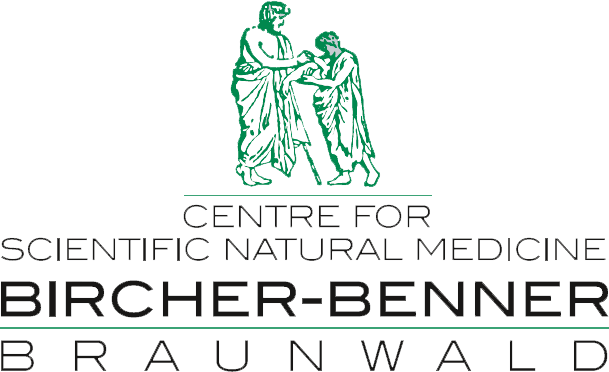ON THE GENIUS OF THE LIVER
Afflicted by infinite drowsiness, flatulence, loss of appetite, weakness and melancholy, we pay our doctor a visit after the lavish feasts have been doused with a generous helping of red Burgundy.
The French with their rich and fatty cuisine know this “crise du foi” all too well. Liver crises are not harmless. They are the expression of this sensitive organ being massively overloaded, and bear witness to dangerous metabolic damage.
The construction and function of the liver are veritable witnesses to the genius of creation. This organ weighs no more than 2 kg and yet we could not survive a single day without it. In the cells of the liver, all metabolic functions of our body are greatly intensified. Apart from this, it is also the largest gland in our body, which produces hormones, coagulation factors, cholesterol, bile acids, blood proteins (albumin, alpha and beta globulins), blood coagulation factors, amino acids and ketone bodies and releases them in carefully regulated quantities. The liver has to break down glycerol, lactic acid, pyruvic acid and certain amino acids that are accumulated daily from our meals rich in proteins and fats and build them up into glucose. Glucose produced in reasonable quantities is stored by the liver as glycogen (animal starch), so that when the body is hungry, sugar can be reintroduced into the blood. It also stores vitamins and iron, and produces lipoproteins for the transport of blood fats and cholesterol. Healthy liver cells continuously measure the blood cholesterol level to ensure that their cholesterol synthesis meets the exact needs. The liver releases very special proteins into the blood to transport iron and minerals.
Our liver also serves as a massive detoxification organ, consisting of about one billion hepatic lobules with a diameter of 1.2 mm. In the middle of these lobules is a liver vein, around which the liver cells are concentrically arranged in many small beams. Between them there is an extremely dense capillary network. Despite this, there is no direct connection between the liver cells and the liver capillaries, because a fine molecular network, the basic substance of the delicate connective tissue, is inserted everywhere. Each and every substance, each piece of information that has to pass from the blood to the liver cell or from the liver cells back into the blood, has to pass through this molecular sieve that is the basic substance of the delicate connective tissue, this fine network of proteoglycans and glucosamine chains. Around the hepatic lobules there are bundles of the smallest hepatic arteries, bile capillaries and portal vein branches.
Arterial blood and portal vein blood mix in the liver capillaries and flow through them along the hepatocellular beams to the central liver vein. Every molecule of the food we eat, every drug, every pollutant passes from the intestine to the portal vein and from there to the liver for inspection, alteration, detoxification and excretion.
The general malnutrition involving lots of bread, fat, meat, cheese, white flour and sugar overloads our liver massively on a daily basis. The capillaries become permeable and the molecular sieve of the basic substance is destroyed by the deposition of organic acids and amyloids. The cholesterol level is measured to be too low and therefore too much cholesterol is produced. This causes the liver cells to be massively overburdened and the oxygen in the capillaries is used up before the blood has reached the innermost liver cells of the hepatocellular beams. As a result, these cells die and are transformed into fat cells (fatty liver). The detoxification of harmful substances and food toxins is no longer sufficient, so that oxygen radicals are formed. Urinary metabolic waste products can no longer be prepared for excretion and must be returned to the intestine via the bile. But from there they return to the liver via the portal vein and place even more strain on the liver (enterohepatic circulation).
As a result, the intestine, liver and portal vein system are massively overburdened by food toxins which enter the intestine from a surplus of proteins, fats and rapidly digestible carbohydrates (white flour, sugar), from flavour enhancers, colourings and preservatives supplied by our industrially artificial malnourishment.
A liver crisis is a cry for help, an emergency call from the abused and battered liver. It does not merely require liver drops, but also eating and drinking habits that are suitable for our biology. The healing of the liver and its fatty degeneration is only possible through a new, living fresh food diet. It is possible by means of a dietary cure that starts with entirely freshly prepared fruit and vegetable juices, almond and sesame milk with a transition to a living fresh plant-based diet (raw food), of which 2/3 of our meals should always consist. You can obtain our manual for patients with liver and gallbladder conditions from your health store. In this guide you will find a clear and easily understandable explanation of the purpose of this diet. A therapeutical approach that is well worth it.
Tip:
Radish juice has a cholagogic effect: peel the radish well and enjoy it fresh from the juice centrifuge, spoon by spoon, with tea infusions of milk thistle fruit, lavender, celandine, fumitory, yarrow and dandelion alternately. Artichokes, caraway and rosemary protect the liver cells. Bitter teas such as wormwood, but also mint and milk thistle have a cholagogic effect.
Dr.med.Andres Bircher
